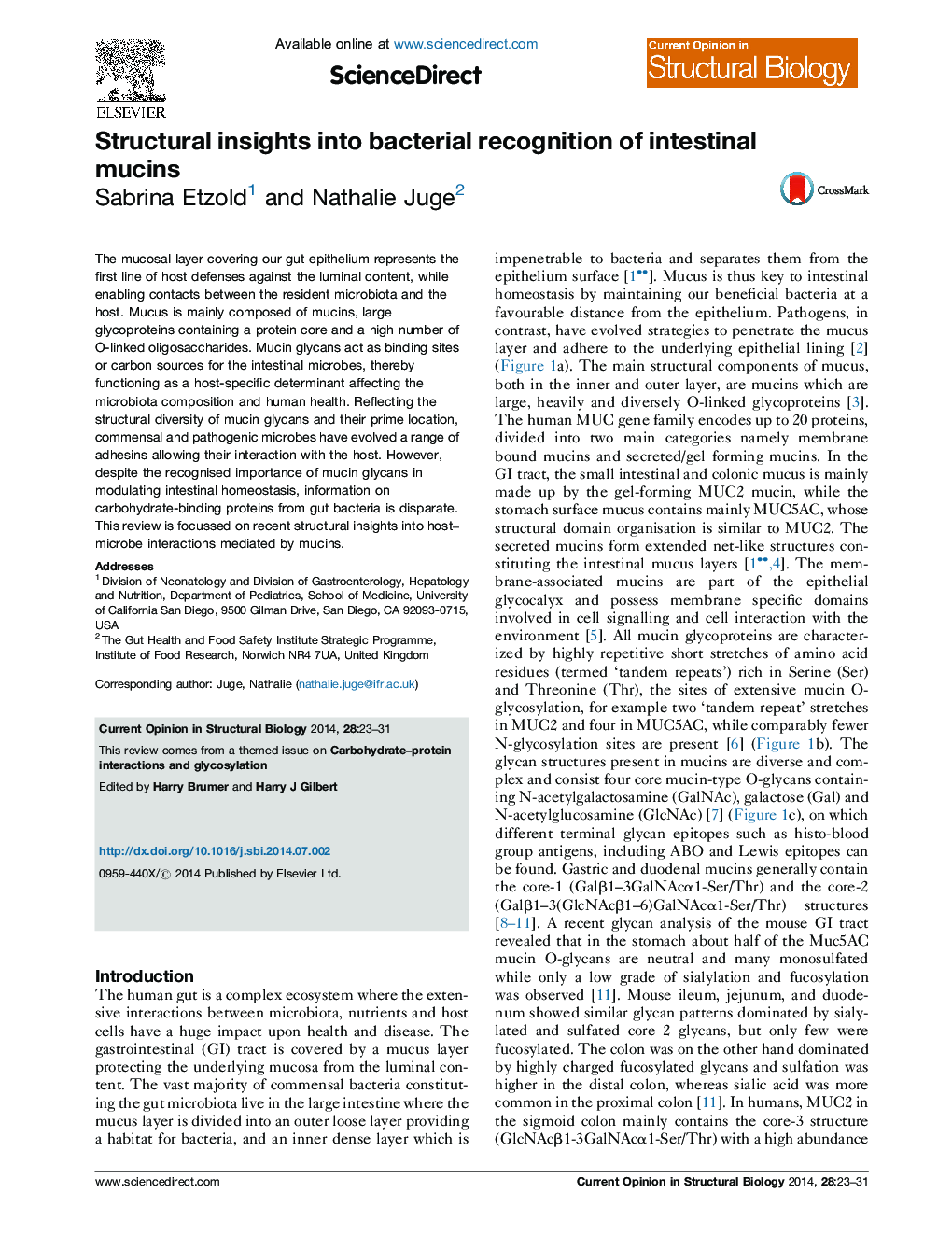| Article ID | Journal | Published Year | Pages | File Type |
|---|---|---|---|---|
| 8320055 | Current Opinion in Structural Biology | 2014 | 9 Pages |
Abstract
The mucosal layer covering our gut epithelium represents the first line of host defenses against the luminal content, while enabling contacts between the resident microbiota and the host. Mucus is mainly composed of mucins, large glycoproteins containing a protein core and a high number of O-linked oligosaccharides. Mucin glycans act as binding sites or carbon sources for the intestinal microbes, thereby functioning as a host-specific determinant affecting the microbiota composition and human health. Reflecting the structural diversity of mucin glycans and their prime location, commensal and pathogenic microbes have evolved a range of adhesins allowing their interaction with the host. However, despite the recognised importance of mucin glycans in modulating intestinal homeostasis, information on carbohydrate-binding proteins from gut bacteria is disparate. This review is focussed on recent structural insights into host-microbe interactions mediated by mucins.
Related Topics
Life Sciences
Biochemistry, Genetics and Molecular Biology
Biochemistry
Authors
Sabrina Etzold, Nathalie Juge,
